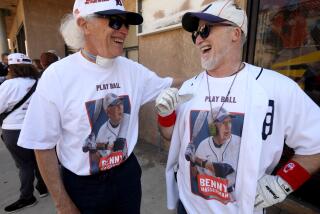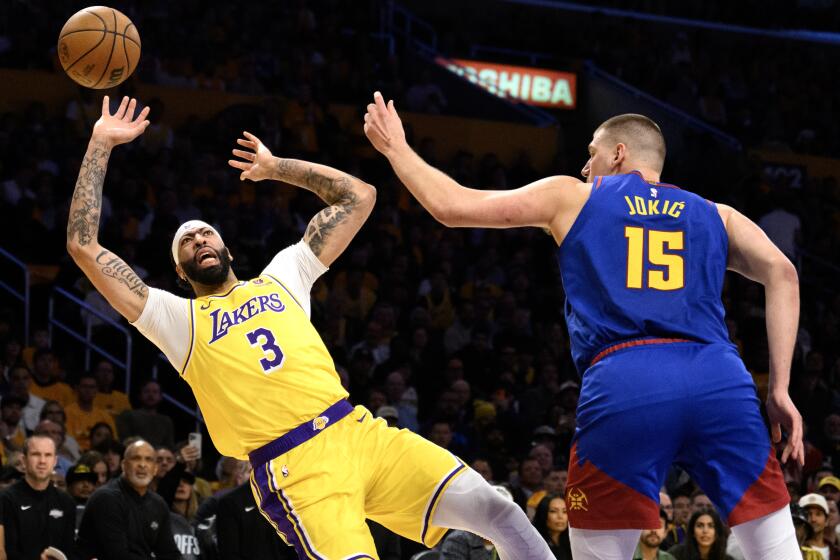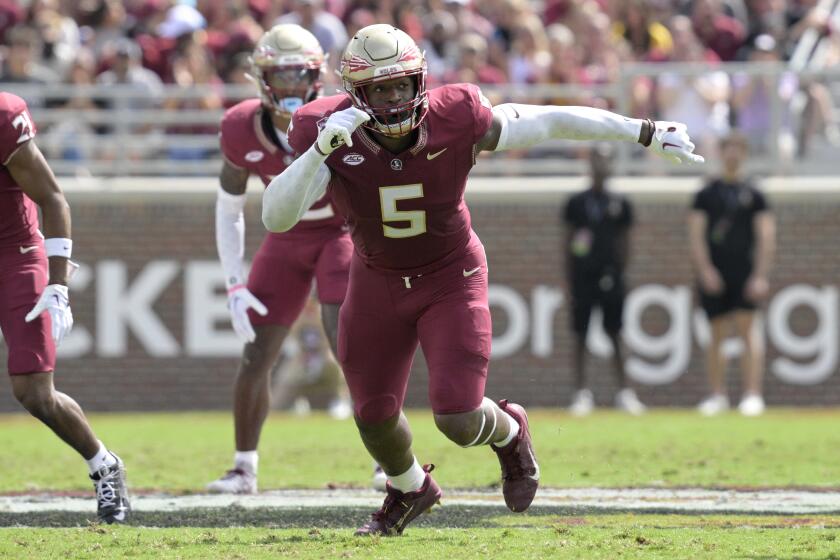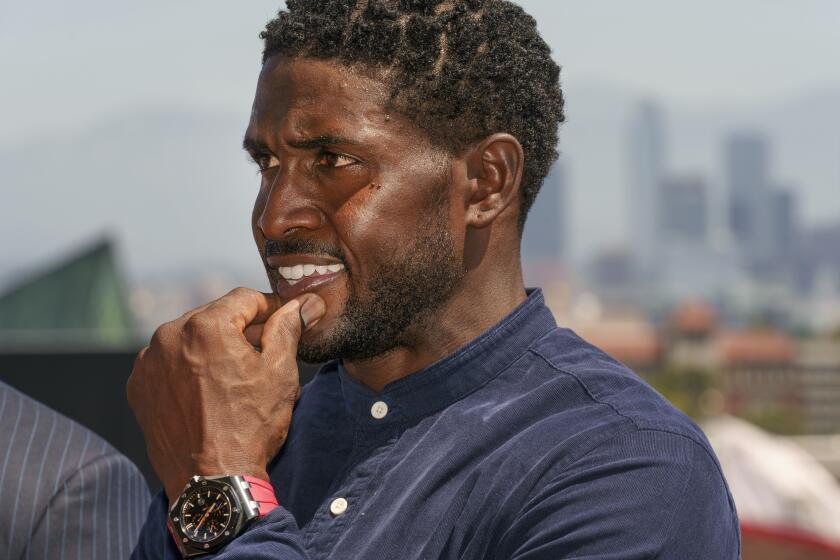What’s so special about pitchers? The answer may be evolutionary
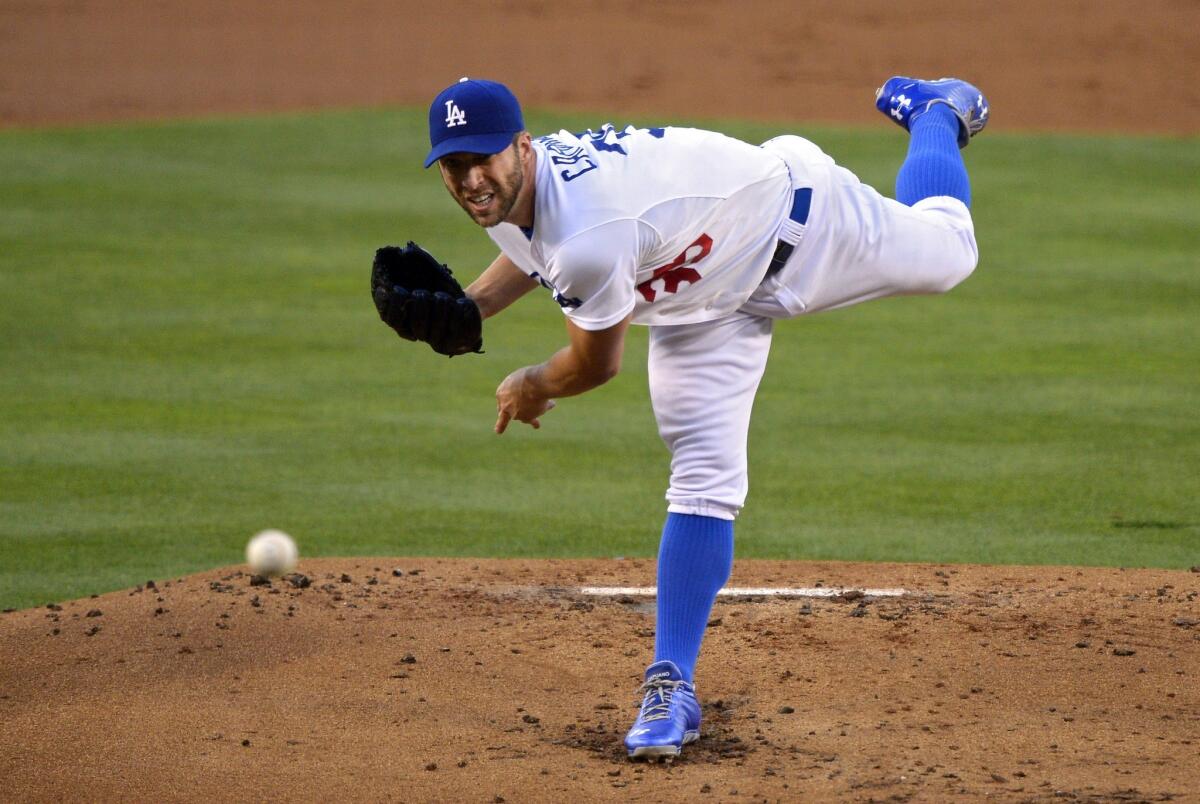
The kids at his elementary school played a game that involved tossing a tennis ball across the yard.
Whenever it was Chris Capuano’s turn, everyone backed up a few steps. That’s when he realized he was different.
“I threw a little bit harder, a little bit farther,” he says. “I had a stronger arm.”
Capuano eventually grew up to be one of the lucky few, a pitcher in the major leagues.
The 34-year-old left-hander belongs to a tiny percentage of the human population that possesses the ability to stand on a mound and throw with enough velocity and movement to earn a living at baseball.
This rarefied skill involves fitness and uncanny timing, a gift for sequencing the body’s muscle groups in perfect coordination. According to a recent scientific paper, it might also reflect millions of years of evolution.
“If it were not for our ability to throw,” says Neil Roach, a postdoctoral scientist at George Washington University, “we would not be who we are today.”
Numerous factors contribute to the making of a top-notch pitcher. Genetics might play a role. Same with initial aptitude — when kids experience early success at something, they tend to spend more time and effort honing that skill.
Capuano’s father was a minor league shortstop, and they played a lot of catch in the yard.
“I guess it’s a great feeling when you have a good arm as a kid,” Capuano said. “It’s fun to strike people out.”
Throwing was far more serious business for our early ancestors, according to a recent study in the journal Nature that was co-written by Roach and colleagues at Harvard.
Adult male chimpanzees served as the starting point for their evolutionary hypothesis. Though quite strong, the apes can throw objects only about 20 mph, or one-third as fast as a 12-year-old Little Leaguer might.
The researchers believe that, in the transition from ape to man, several anatomical changes endowed ancestors such as Homo erectus with significantly greater throwing abilities.
Whereas chimpanzees have shrugged shoulders, which allow them to hang from trees, humans have a lower, wider scapular anatomy. Just as important, humans can rotate their upper bodies independent of their legs and can twist their upper arms to create torque.
These developments might have allowed early man to hunt for big game and ward off scavengers. A calorie-rich diet of meat and fat would have facilitated the growth of larger brains, researchers say.
Though the research suggests that Homo erectus, whose origin has been traced to 1.8 million to 1.9 million years ago, could throw with accuracy, gaps in the fossil record make it difficult to say what might have been used for projectiles. Evidence of stone-tipped spears did not appear until about 500,000 years ago.
It is also unclear when throwing became a recreational activity among Homo sapiens, who came along about 200,000 years ago.
Baseball, which did not enter the picture until the 19th century, has seen its own mini-evolution in the art of throwing, with continually developing techniques.
Most modern pitchers fall into one of two categories. The “drop and drive” type stays low, pushing hard off the pitching rubber with his back leg. The “stand tall and fall” variety stays more upright, letting gravity pull him down the front slope of the mound.
As Capuano grew up in Massachusetts during the 1990s, attending camps and playing for his high school team, he began to focus on his form.
“I’m somewhere in between,” he said of the two prevalent styles. “I like to stay tall, but I also like to get into my back leg and create some power.”
Dueling philosophies aside, all major league pitchers share the same basic mechanics that relate to the anatomical evolution proposed by Roach’s group and also help explain why so few people can throw at an elite level.
Arm strength is a surprisingly small part of the equation.
A 1971 study helped to prove that point. Researchers paralyzed a pitcher’s triceps muscle with a nerve block, then found he could throw at more than 80% of his normal speed.
Michael Feltner, a sports medicine professor at Pepperdine University, echoes what every good baseball coach knows when he says that throwing begins with the legs.
“From a mechanical standpoint, the ability to stride forward while rotating your trunk is imperative,” he said. “You start to generate angular momentum through the actions of your body.”
As a pitcher progresses through his motion, the major muscle groups coil like a spring, creating and storing energy. But if pure strength were enough, Feltner notes, major league rotations would be filled with bodybuilders.
Throwing a big league fastball requires transferring all of that momentum upward from the legs to the trunk and, finally, to the arm. Everything must be exactly sequenced, culminating in the final 30 to 50 milliseconds with a rapid internal rotation of the shoulder and an equally quick elbow extension.
Split-second timing is what ultimately powers a 90-mph pitch. It separates pro pitchers from the other 99.99% of the population.
“Not many people can coordinate those movements like that,” Feltner said.
These days, as Capuano struggles through a series of inconsistent starts for the surging Dodgers, he is trying to keep things simple.
That means limiting thoughts about technique, trying to find a calm state of mind that some athletes refer to as “the zone.” He certainly isn’t pondering evolution or biomechanics.
But the Dodgers pitcher can appreciate the nature of what he does, and knows he can do it better than the vast majority of people on this planet.
“I think about that sometimes,” he said. “And I’m thankful.”
twitter.com/LATimesWharton
More to Read
Get our high school sports newsletter
Prep Rally is devoted to the SoCal high school sports experience, bringing you scores, stories and a behind-the-scenes look at what makes prep sports so popular.
You may occasionally receive promotional content from the Los Angeles Times.

